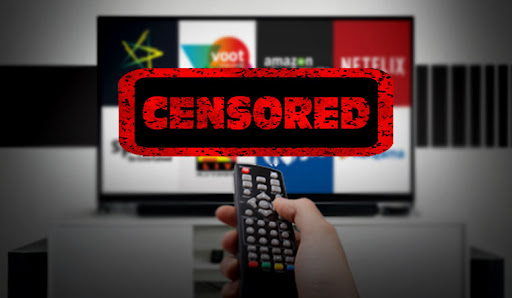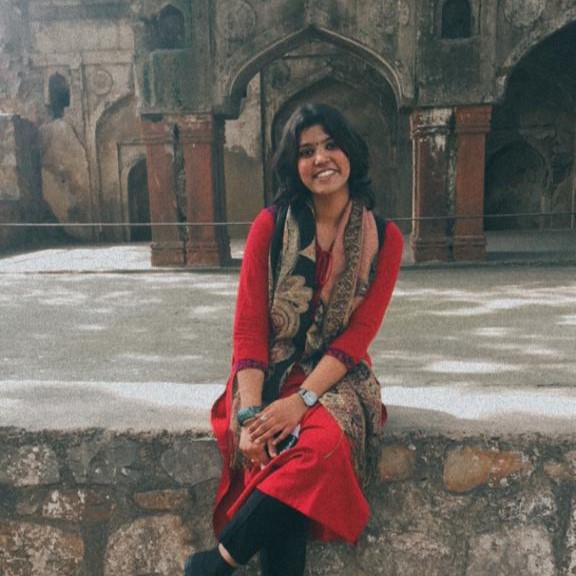
Censoring Sex in Indian Media
Censorship dates back to ancient times and has been used to suppress or restrict information and ideas that are considered objectionable, harmful or even sensitive throughout history. Censorship in television is a hotly debated topic, with some arguing that it is necessary to protect the public from offensive content, while others believe it infringes on our First Amendment rights and limits artistic expression. Age, often referred to as just a number, implying that it does not necessarily define or limit an individual’s capabilities or worth, becomes a crucial factor that determines what can be shown on-screen. This essay will discuss the impact of censorship in television, exploring its role in protecting minors and its effects on creative freedom.

THE VIEW OF THE PROPONENTS VS. THE OPPONENTS
In the context of television, censorship usually involves editing or removing scenes or language that may be deemed inappropriate or offensive. Proponents of censorship argue the goal of censorship to be the protection of the public, particularly children, from exposure to content that is considered harmful or inappropriate. For example, television shows that contain violence, sexual content, or strong language may be inappropriate for young viewers. Additionally, it can help to prevent the spread of hate speech, misinformation, and other harmful content that can have negative impacts on society as a whole. Supporters argue that it is necessary to ensure that minors are not exposed to potentially harmful content and are able to watch programming that is appropriate for their age group as children are impressionable and may imitate what they see on-screen, leading to negative behavior and attitudes. It is, therefore, the responsibility of broadcasters to ensure that they are not exposing children to any sort of inappropriate content.
It is important to note that some level of regulation is necessary to ensure that television programming is appropriate for all audiences. For example, the Federal Communications Commission (FCC) regulates content on broadcast television to ensure that it is suitable for all viewers. The FCC has guidelines regarding language, sexual content, and violence that broadcasters must adhere to in order to avoid fines or other penalties. Additionally, many cable and streaming services have their own standards and practices departments that review content to ensure that it is appropriate for their intended audience.
Opponents of censorship, on the other hand, argue that it is a violation of our First Amendment rights and limits artistic expression. The Amendment of the US Constitution guarantees the right to freedom of speech, which includes the right to express ideas and opinions without censorship or restraint. When the government or other entities censor content, they are essentially limiting one’s ability to express themselves freely, rendering creators unable to explore certain themes or topics in their work. This can lead to a lack of diversity in television shows, with creators sticking to safer, more commercially viable options to avoid censorship and can have a chilling effect on creativity and may stifle important conversations and debates.
Moreover, censorship can be subjective, varying greatly between individuals and cultures and even prone to abuse. What one person considers offensive or harmful may not be seen that way by another person. This means that the line between what is considered acceptable and what is not can be blurry and constantly shifting. In some cases, censorship can be used to silence dissenting opinions or ideas that are unpopular with those in power, hence, leading to narrowing of perspectives in the media. Censorship policies that are deemed appropriate in one country may not be in another, aggravating the already-existing gaps of communion.

THE NEED OF THE PROCESS
The Report on Culture and Development submitted to the United Nations Educational, Scientific and Cultural Organisation (UNESCO) says, in part,
“All countries and cultures have struggled to define the line where freedom ends and licence begins. Standards of decency, respect for others and self-restraint vary from one country to another, and from one period to another. While all forms of censorship must be avoided, nowhere is freedom unqualified and allowed to operate regardless of the consequences.”
Calls for censorship of TV programmes have been made in India in response to concerns that young people may be exposed to harmful content. This is particularly important given that children are addicted to television more than one imagines. However, the issue of censorship is controversial, particularly if it is aimed at adult viewers. With the proliferation of television channels, parents are unable to monitor what their children are watching, and there are few programmes that do not contain sequences or shots that could be considered offensive or unacceptable. There are few programmes that contain gratuitous violence or explicit sex, and Indian serials have little by way of either. There is far more violence in cartoons, for example. However, attempts to censor television programmes have faced numerous problems, particularly when it comes to determining who has the authority to determine what is acceptable content. This is because there is a lack of faith in the arbiters of good taste and those making the censorship decisions. The lists of those on the panel of censors in each regional office of
the Central Board of Film Certification do not stand up to scrutiny, and there is little confidence that filmmakers and producers of serials and entertainment shows will necessarily accept their views. While there is some self-censorship in place, particularly in Indian programmes, a broad-based public body of distinguished people in the arts should be formed to advise producers and scriptwriters on what they consider to be harmful to young people. Such a body should be appointed transparently and focus on the risks to young people, rather than attempting to determine what adults should or should not see. Although there is a risk that such a body could become strait-laced and narrow-minded, this is a risk that is always present when people are placed in positions of authority.

CONCLUSION
In recent years, there has been a shift towards more relaxed censorship policies, with some shows featuring explicit content, such as violence and nudity, being aired during prime-time slots. This has led to criticism from some parents and concerned individuals who feel that such content is inappropriate for younger viewers. While age ratings and parental guidance are in place to help parents decide what their children should and should not watch, it ultimately comes down to individual responsibility. Parents should be actively involved in monitoring their children’s television viewing habits and ensure that they are only watching appropriate content.
In conclusion, age may be just a number, but when it comes to censorship in television shows, it is an important factor to consider. While censorship is necessary to protect minors from potentially harmful content, it can also limit creative freedom and diversity. The ongoing debate surrounding censorship highlights the importance of striking a balance between protecting children and allowing creators the freedom to express themselves fully. It is important to have clear guidelines and standards in place that are transparent and applied fairly in order to ensure that censorship is used appropriately. Ultimately, the goal should be to create a media landscape that is diverse, inclusive, and fosters important conversations and debates.
Eventually, it is up to individuals to take responsibility for what they watch and monitor what their children are exposed to on television.
Author

